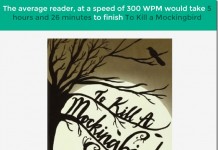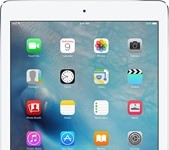 So how will younger kids fare with electronic books?
So how will younger kids fare with electronic books?
Pretty well, if you go by an unscientific but endlessly useful experiment on the South Side of Chicago.
And now researchers at Ball State University in Indiana report good luck so far with elementary schoolers, ages 6-10. One childcare center administrator says the students actually “kind of quarrel over who gets to go to the eBook area first.”
Encouragingly, at least some of the BSU-supplied books are of the public domain variety–available for free from places like the International Children’s Digital Library, source of the book cover shown here.
More details from StarPress.com in East Central, Indiana, with links added to the material below:
MUNCIE – Children at Huffer Memorial Children’s Center no longer have to turn the page when reading stories like The Three Little Pigs or Alice in Wonderland.
Now they can push a button instead.
The childcare center has partnered with Ball State University’s Center for Information and Communication Sciences (CICS) to offer 15 electronic books (eBooks) to grade school students aged 6-10. The eBooks are part of a Lilly-endowed university research project that is trying to determine how effective their use is in the K-6 learning environment.
“The kids enjoy these books immensely,” said Paula Morris, director at Huffer. “They kind of argue over who gets to go to the eBooks area first.”
Each of the eBooks holds 17 popular children’s books and a dictionary in its memory. Kids can pick what story they want to read from an easy-to-use menu tab that highlights the choices. They can also draw and write on the tablet-sized devices with the use of a touch pen.
“I like drawing and erasing,” said six-year-old Marcus Brown. “I can erase things with my finger. It’s magic.”
The university was matched with Huffer for the project through the United Way of Delaware County’s Community Tech Link program, which provides technology planning, solutions, implementation and training to non-profit organizations…
Richard Bellaver, a Ball State professor and CICS director, said this was not the first time a research project had been carried out involving eBooks. In the past, the electronic devices, which are on loan from the Center for Media Design, have been used in experiments as textbooks for graduate students.
Bellaver said the goal of this current project, which is still in its initial phase, is to see whether kids favor the eBooks over their hard-bound counterparts.
He explained that eBooks would be lighter for a child to carry in his or her backpack because of their ability to carry so many stories in one device.
“We’re also trying to test their durability,” he said. “How many get dropped or spilled on and how well they are going to last.”
If nothing else, presumably, Bellaver will want to know how well the children do academically compared to those using paper books.
The earlier experiment with grad students showed that comprehension levels were essentially the same even if some of the subjects did not like the e-format as presented (something that could be improved).
My theory is that the kids in the new BSU experiment, being younger and more flexible, can adapt more easily.
Whatever the case, I really like Bellaver’s attitude here:
He hopes that, as the project enters its second phase, the kids will be able to take the eBooks home with them.
“I think all of these kids see one of these eBooks and think it’s a new toy,” he said. “I think they look at them and think it’s fun.”
As gung ho as I am on print on demand and eager to see experiments with it, I’d hate for “pure” e-books to be automatically dismissed as another approach for young kids.
Meanwhile I wonder exactly what hardware Bellaver’s using this time. The grad students in the earlier trial used black and white material even though some of the screens had color capabilities. Hardware was a mix of monochrome Model REB 1100s and color-capable REB 1200s.
So what’s up now? Are the kids seeing color art with the text? I don’t know from the news clip. Imagine the possible results, however, if the books can be as colorful as the cover of Alice in Wonderland. As noted, the illustration is from the International Children’s Digital Library–and not necessarily the BSU experiment.
Come February, Bellaver and colleagues will start to question the kids and teachers in detail about their feelings toward the e-books. No telling what they’ll conclude. And, again, academics matter–not just the kids’ enthusiasm. But so far, apparently, so good if you go just by the E word.
Related: Academic Libraries Take a Look at E-Books, an Illinois study initiated by Lori Bell and Tom Peters of Handheld Librarian fame.

































